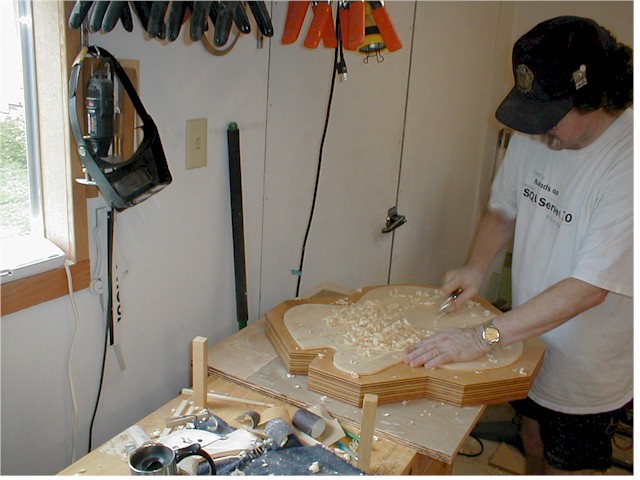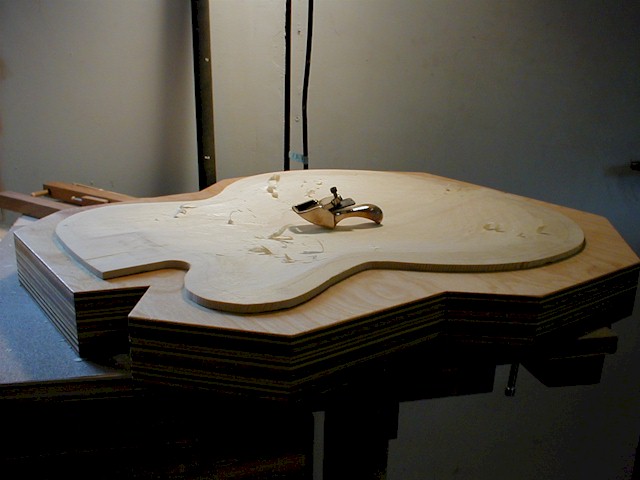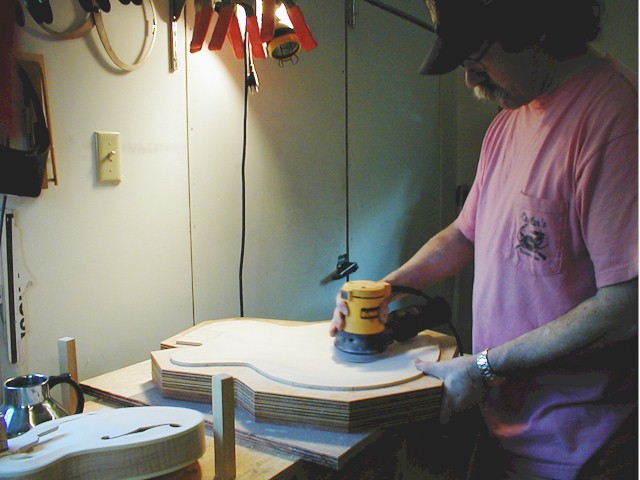| These are the primary tools used to carve the
top. The same finger plane that was used for the outside is used, in
addition to a thickness caliper to measure thickness. I carve the top to
the desired arch and use the caliper to measure how much to remove from
the inside.
Laying the plate on top of the sides form holds the top steady allowing
you to carve without marking up the outside of the top.
|
 |
| Here is yours truly hard at work with the
finger plane. This top is german spruce, and is a pleasure to carve.
|
 |
| This picture shows the holes I drilled with a
forester bit to gauge the depth to carve. I set up a forstner bit on my
drill press, and set it up to where it would drill down to a few
millimeters less than I'd actually carve. This is just a simple way of
knowing when you're close enough to start worrying with the calipers. On
mandolins, I use the forstner bit to remove as much excess wood as
possible, but I have a small drill press, and that doesn't allow me to do
the same with a guitar. |
 |
| Here's a shot of the top after a couple of
hours work with the plane. At this point, the top is a uniform thickness,
but about 3 millimeters thicker than the final product.
I have a Merlin carving machine on order, which I'll use to make a copy
of this hand carved top to use as a template for future guitars.
|
 |
| With the top now at the right thickness, all
that's left is to smooth up everything with my Orbital Sander. Here's
another good example of buying good tools. I had no idea how much use this
sander would get when I purchased it. |
 |




